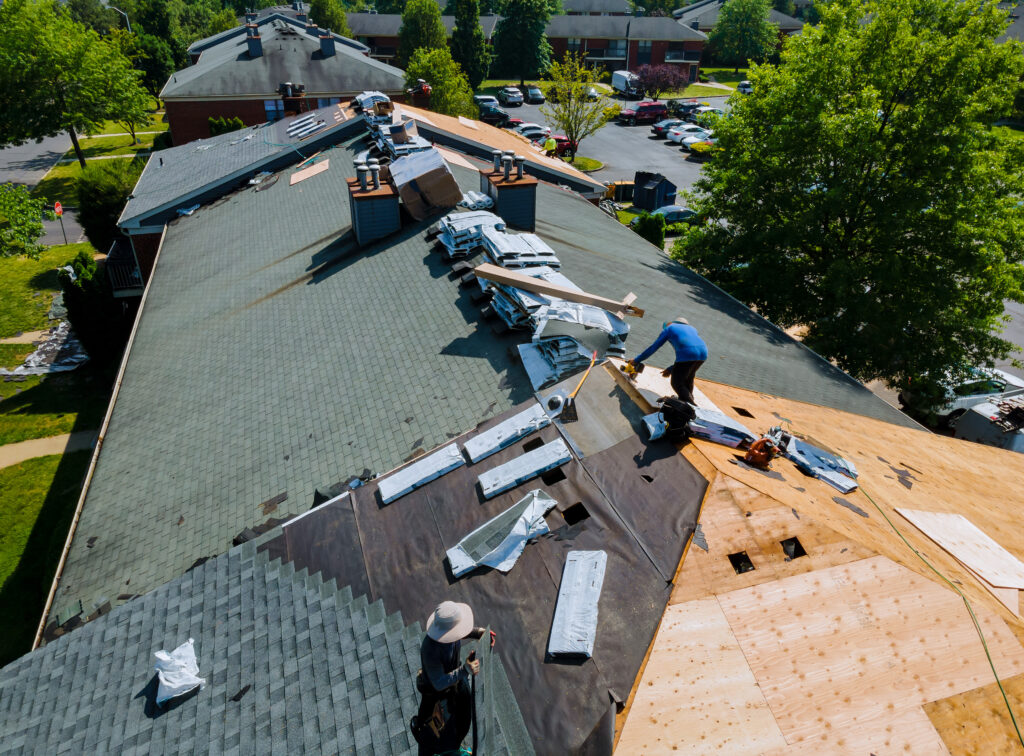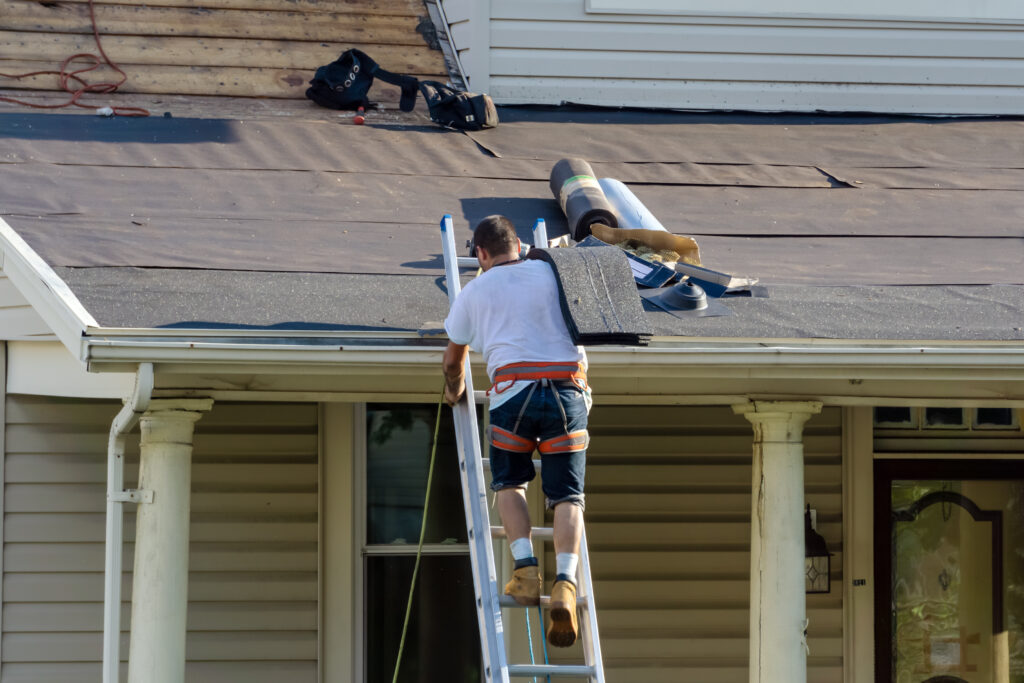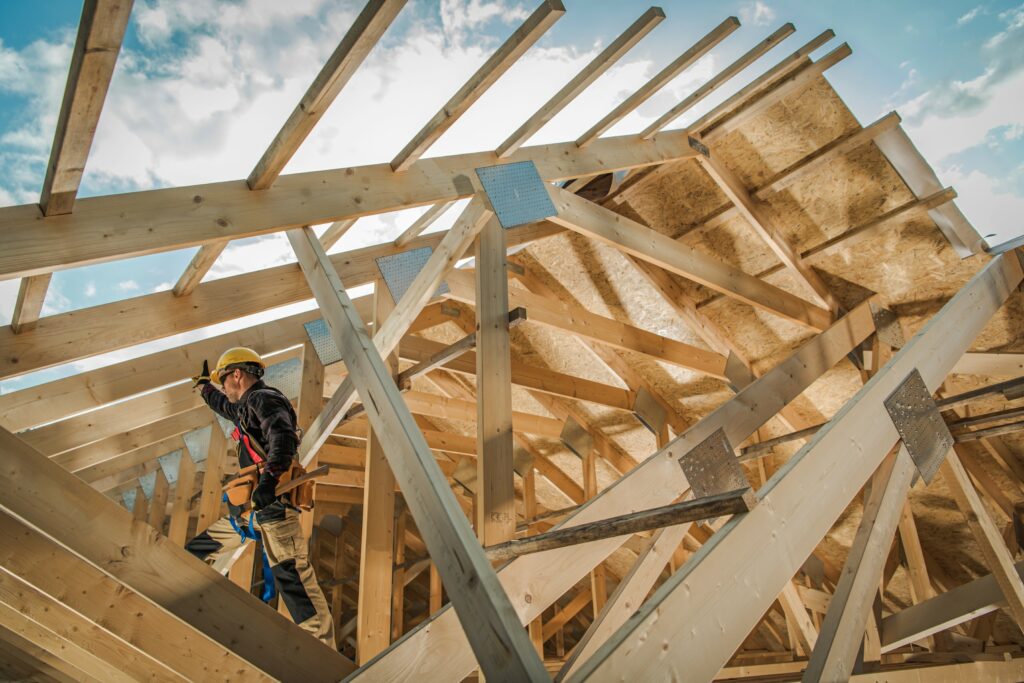Roofing contractors lose money when they cannot track actual costs against original estimates. Material prices fluctuate, labor hours extend beyond expectations, and subcontractor charges vary by project. Without clear visibility into these costs, profit margins disappear before projects complete. The right roofing job costing software gives contractors real-time insight into material expenses, labor costs, and subcontractor charges across every project.
Growing roofing companies struggle most with cost tracking because they handle more projects without corresponding increases in administrative oversight. Guesswork replaces data when tracking multiple jobs manually. Smart roofing business owners recognize that staying profitable requires job-level cost insight rather than hoping estimates prove accurate.
The Hidden Profit Killers in Roofing Projects

Most roofing contractors focus on winning bids without understanding their actual costs per project. They estimate material quantities, guess at labor hours, and hope subcontractor charges match expectations. This approach works until material prices spike or projects encounter unexpected complications.
Material waste costs more than most contractors realize. Standard waste factors assume perfect conditions and experienced crews. Real projects involve damaged materials, measurement errors, and installation mistakes that increase actual consumption beyond estimates.
Quick tip: Roofing companies that track actual material usage discover they typically consume 12-18% more materials than estimated due to waste, damage, and measurement variations.
Labor overruns happen when crews encounter unexpected conditions or work inefficiently. Without time tracking, contractors cannot identify which projects or crew configurations produce the best results. This blind spot prevents optimization and reduces overall profitability.
How Roofing Job Costing Software Provides Real Insights

Modern roofing software tracks actual costs in real-time throughout project execution. The system records material deliveries, labor hours, and subcontractor charges as they occur. This visibility helps identify cost overruns before they eliminate profit margins completely.
Comparison reporting shows actual costs against original estimates for every line item. You can see which materials cost more than expected, which labor phases took longer than planned, and which subcontractors exceeded their bids. This analysis helps improve future estimates while protecting current project profitability.
Integration with supplier systems provides real-time material pricing updates that prevent estimate inaccuracies. When lumber costs spike or shingle prices change, your estimates reflect current market conditions automatically. This accuracy helps maintain profit margins while staying competitive.
Getting Started With Just a Few Clicks

User-friendly interfaces make cost tracking simple without requiring extensive accounting knowledge. Modern platforms organize information logically so roofing contractors can find cost data quickly. Visual dashboards show profit margins, cost variances, and budget status at a glance.
Quick data entry allows field crews to record time and material usage without complicated procedures. Mobile apps let workers log information directly from job sites using smartphones or tablets. This real-time data collection ensures accuracy while reducing administrative overhead.
Automated calculations handle complex cost allocations and variance analysis without manual effort. The system compares actual costs to budgets automatically, highlighting areas that need attention. These insights help make timely adjustments that protect profitability.
Accounting Software Integration for Complete Visibility

Seamless integration with popular accounting software maintains accurate financial records without double data entry. Cost information flows automatically from job sites into bookkeeping systems. This connectivity ensures your financial statements reflect actual project performance accurately.
QuickBooks connectivity helps smaller roofing companies maintain professional accounting standards without hiring additional office staff. Job costs transfer directly into profit and loss statements organized by project. This organization simplifies tax preparation while providing clear profitability analysis.
Real-time synchronization keeps financial data current across all business systems. When crews log time or materials get delivered, costs update immediately in both project management and accounting systems. This accuracy supports better decision making throughout project execution.
Accurate Measurements That Support Cost Control

Precise material calculations help minimize waste while ensuring adequate supplies for project completion. Digital measurement tools reduce errors that lead to over-ordering or mid-project material shortages. Both scenarios damage profitability through excess costs or work delays.
Aerial imagery integration provides fast and accurate measurements without requiring ladder access or manual calculations. These measurements support better material estimates while reducing safety risks. Consistent accuracy helps control costs while improving crew efficiency.
Waste factor customization allows roofing contractors to adjust material calculations based on crew experience, project complexity, and historical performance. New crews might need higher waste factors while experienced teams can work with tighter margins. This flexibility improves estimate accuracy.
Did you know? Roofing contractors using digital measurement tools reduce material waste by an average of 8% compared to manual takeoffs because automated calculations eliminate human measurement errors.
All the Tools for Comprehensive Cost Management

Integrated platforms combine estimating, project management, and cost tracking in single systems that eliminate data transfer between different applications. All project information stays connected from initial quote through final billing. This integration prevents errors while providing complete project visibility.
Material tracking features monitor deliveries, usage, and remaining inventory throughout project execution. You can see exactly how much material each phase consumes and identify opportunities for optimization. This visibility helps prevent shortages while controlling excess inventory costs.
Labor management tools track crew productivity across different project types and conditions. Time tracking reveals which configurations work most efficiently while identifying training opportunities. This data helps optimize crew assignments while improving overall profitability.
Project Management Features That Control Costs

Milestone tracking breaks complex roofing projects into manageable phases with clear completion criteria and cost targets. This organization helps identify cost overruns early when corrective action can still protect profit margins. Regular reviews prevent small problems from becoming major losses.
Change order management documents scope modifications and their cost impact automatically. When customers request additional work, the system calculates pricing and updates project budgets immediately. This accuracy prevents undercharging while maintaining clear customer communication.
Subcontractor coordination ensures external work stays within budget parameters while maintaining quality standards. The platform can track subcontractor bids, monitor progress, and verify billing accuracy. This oversight protects against cost overruns while ensuring accountability.
Management Software for Growing Roofing Companies

Scalable solutions grow with your roofing business without requiring system changes or data migration. Cloud based roofing software handles increasing job volumes and team members seamlessly. This flexibility protects technology investments while supporting business expansion.
Multi-location support helps coordinate cost tracking across different territories while maintaining centralized oversight. Each location can manage local projects while sharing best practices and performance data. This coordination improves overall efficiency while maintaining cost control.
User permissions control access to sensitive cost and pricing information based on job roles. Project managers can view detailed financial data while field crews see only information relevant to their tasks. These controls protect competitive information while maintaining operational transparency.
Tracking More Jobs Without More Overhead

Automation features handle routine cost tracking tasks without manual intervention from office staff. The system can record material deliveries, calculate labor costs, and update project budgets automatically. This efficiency allows tracking more projects without proportional increases in administrative work.
Batch processing capabilities handle cost updates across multiple projects simultaneously during regular review periods. Instead of updating each job individually, managers can process all cost changes at once. This efficiency saves time while ensuring consistent data accuracy.
Exception reporting highlights projects that exceed cost thresholds or show unusual variance patterns. Automated alerts notify managers when projects need attention before small overruns become major losses. This early warning system helps protect profitability across all active jobs.
Cloud Based Software Benefits for Field Operations

Remote access capabilities allow cost tracking from any location with internet connectivity. Field supervisors can review project costs and update information from job sites without returning to the office. This flexibility improves data accuracy while supporting efficient operations.
Real-time collaboration keeps all project stakeholders informed about cost status and budget performance. Team members can share updates, discuss variances, and coordinate responses through the same platform. This communication prevents misunderstandings while ensuring prompt action on cost issues.
Data security features protect sensitive financial information while ensuring reliable access for authorized users. Professional hosting services provide backup protection and security monitoring beyond what small roofing businesses can afford independently. This protection preserves critical business data while maintaining operational continuity.
Key Features That Drive Profitability

Cost variance analysis compares actual expenses to original estimates across all project elements. Detailed reporting shows which line items perform well and which consistently exceed budgets. This insight helps refine estimating accuracy while identifying operational improvement opportunities.
Profitability tracking calculates actual margins at project completion and compares results against company targets. Historical analysis reveals which project types, crew configurations, and market conditions produce the best results. This knowledge helps focus business development efforts on most profitable opportunities.
Supplier performance monitoring tracks delivery reliability, pricing accuracy, and quality issues across different vendors. This data helps optimize vendor relationships while ensuring competitive pricing. Strong supplier partnerships support better cost control and project performance.
Integrated Financing and Payment Solutions

Customer financing integration helps close larger roofing projects while ensuring immediate payment through lending partners. When customers finance projects, contractors receive full payment upfront regardless of loan terms. This arrangement improves cash flow while expanding market opportunities.
Credit card payment processing provides convenient collection options that speed payment while reducing administrative overhead. Customers appreciate payment flexibility while contractors receive funds faster than traditional billing cycles. Quick payment improves cash flow and reduces collection risks.
According to the National Association of Home Builders, contractors who offer multiple payment options collect payments 25% faster than those accepting only cash or checks. Payment flexibility improves customer satisfaction while supporting better cash flow management.
Automated billing generates invoices based on project completion milestones and approved costs. Integration between cost tracking and billing systems ensures accurate charges while reducing administrative work. This accuracy prevents disputes while maintaining professional customer relationships.
More Contractors Choose Comprehensive Solutions

Roofing industry trends favor integrated platforms that handle multiple business functions through single interfaces. More contractors recognize efficiency benefits of connected systems versus managing separate applications for different functions. Comprehensive solutions reduce training requirements while improving data consistency.
Cost efficiency improves when businesses eliminate multiple roofing software subscriptions while gaining better integration between functions. One platform typically costs less than several specialized applications while providing seamless information flow. This consolidation reduces complexity while improving overall functionality.
Training simplification helps teams adopt new systems faster when all functions use consistent interfaces and workflows. Learning one platform proves easier than mastering multiple applications with different approaches. Faster adoption helps realize benefits sooner while reducing implementation challenges.
Order Materials With Better Cost Control

Direct supplier integration streamlines material ordering while maintaining cost visibility throughout the process. Connections with suppliers like ABC Supply and SRS Distribution provide real-time pricing and availability information. These partnerships help control costs while ensuring timely deliveries.
Automated purchase orders generate material requests based on project schedules and estimated consumption. The system can order materials for upcoming phases while tracking costs against budgets automatically. This automation prevents shortages while maintaining cost control.
Delivery coordination ensures materials arrive when crews need them without excess inventory costs. The platform can schedule deliveries based on project timelines while tracking actual consumption patterns. This optimization reduces waste while preventing work delays.
Understanding how accurate material costing supports overall roofing business profitability works hand-in-hand with efficient billing processes. For contractors looking to improve cash flow management, learn more about streamlined payment collection in our guide on Get Paid Faster: Invoicing Tools for Roofing Contractors.
Fast Accurate Cost Tracking for Better Decisions

Real-time cost updates provide current information that supports timely decision making during project execution. When material costs spike or labor hours exceed estimates, immediate visibility allows corrective action before problems compound. Quick responses help protect profit margins while maintaining project quality.
Mobile cost entry allows field teams to record expenses and time immediately when they occur. This accuracy eliminates reliance on memory and paper notes that often prove incomplete or inaccurate. Real-time data collection supports better cost control and project management.
Data driven decisions replace guesswork when comprehensive cost information supports strategic planning. Historical analysis reveals patterns that help optimize future projects while avoiding past mistakes. This insight helps grow profitable business operations while reducing financial risks.
Effective cost management requires coordination with comprehensive team management systems that handle crew scheduling, project coordination, and performance tracking. Learn more about managing growing operations in our article about The Best Roofing Management Software for Growing Teams.
Frequently Asked Questions
What is roofing job costing software and how does it help my business?
This the of roofing software tracks actual material, labor, and subcontractor costs throughout project execution, comparing them against original estimates. Projul helps roofing contractors identify profit leaks, optimize resource allocation, and make data-driven pricing decisions that protect margins while staying competitive.
How does job costing software improve my profit margins?
Projul provides real-time visibility into actual project costs, helping you identify overruns before they eliminate profits. The platform tracks material waste, labor efficiency, and subcontractor performance, revealing optimization opportunities that can improve margins by 15-25% on average.
Can the roofing software integrate with my existing accounting system?
Yes, Projul connects seamlessly with popular accounting platforms like QuickBooks to maintain accurate financial records automatically. Cost data flows from job sites into your bookkeeping system without manual entry, ensuring your financial statements reflect actual project performance.
How does accurate cost tracking help with future estimates?
Projul analyzes historical project data to identify patterns in material consumption, labor hours, and cost variances. This insight helps create more accurate estimates by adjusting for actual performance rather than relying on industry averages that may not reflect your specific operations.
What kind of material cost tracking does Projul provide?
Projul monitors material deliveries, usage, and waste throughout project execution while integrating with suppliers for real-time pricing updates. The platform tracks actual consumption against estimates, helping identify waste sources and optimization opportunities that reduce material costs.
How does mobile access help with cost tracking accuracy?
Projul’s mobile app allows field crews to record time, materials, and expenses immediately when they occur, eliminating reliance on memory and paper notes. Real-time data entry from job sites ensures accurate cost information that supports better project management and profitability analysis.
Can the software handle different types of roofing projects?
Absolutely. Projul accommodates various project types from residential repairs to large commercial installations, with customizable cost categories and tracking methods for each. The platform adapts to your specific roofing business model while maintaining consistent cost visibility across all projects.
How does Projul help with supplier and subcontractor management?
Projul tracks supplier pricing, delivery performance, and quality issues while monitoring subcontractor costs and productivity. This data helps optimize vendor relationships, negotiate better terms, and make informed decisions about resource allocation that improve overall profitability.
What kind of reporting does Projul provide for cost analysis?
Projul offers comprehensive reporting on project profitability, cost variances, material usage, and labor efficiency. Visual dashboards and detailed analytics help identify trends, compare performance across projects, and make strategic decisions that improve business operations and profitability.
How quickly can I start seeing results from job costing software?
Most roofing contractors begin seeing improved cost visibility within the first few projects using Projul. The platform provides immediate insights into actual costs versus estimates, helping you make adjustments that protect current project margins while improving future estimates and overall business profitability.
Maximizing Profit Through Better Cost Visibility

Profit margin analysis shows actual profitability for completed projects and provides insights for future improvements. Understanding which projects generate the best returns helps focus business development efforts. This knowledge supports strategic growth while maintaining financial health.
Cost center tracking identifies which aspects of projects consume most resources and offer greatest optimization opportunities. Labor efficiency, material waste, and subcontractor performance all impact profitability differently. Detailed analysis helps prioritize improvement efforts for maximum impact.
Competitive positioning improves when accurate cost knowledge supports confident pricing decisions. Understanding true costs allows competitive bidding while maintaining healthy margins. This balance helps win more jobs while ensuring profitable operations.
For a comprehensive overview of how cost tracking integrates with other essential business functions, explore our detailed analysis in The Ultimate Guide to Roofing Contractor Software.
